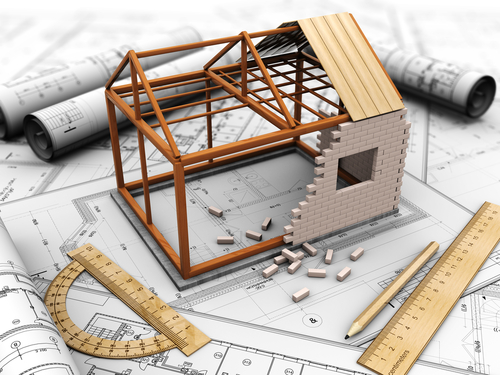Posted on: March 23, 2015 by Huntersure

Affordable housing is a worldwide challenge, especially with growing populations. Manufactured homes have been one solution to these complications in the united states for decades, providing millions of Americans the opportunity to have a home of their own. But the face of the manufactured home could be rapidly changing as new technology and innovations continue to make housing ore affordable. Prefabrication of homes, where a product is assembled in a factory before it reaches its final destination, is how most modern manufactured homes are created, however modern architects and designers have essentially reimagined the manufactured home. Architects and engineers all over the world are turing to 3D printing to create sustainable and affordable homes which can be manufactured, or printed, directly on site.
Three-dimensional printing is the most recent revolution in manufacturing, good production and now construction. Already full scale buildings and homes have been rendered to design completion through the use of state of the art 3D printing machines. While some critics argue that these houses don’t always look appealing and most of them are just outer shells (lacking the wiring, plumbing, furniture, interior walls and other essentials) the proponents say these lack of amenities could be what keeps construction cost to a minimum, thereby increasing the odds of mass production and increasing housing affordability. Furthermore, many of the current designs have been made with recycled, construction waste, biological, and otherwise sustainable materials which many believe will also keep costs low and reduce the environmental impacts of construction.
However, some architects are not content with providing the basic shell. One designer, responsible for the completion of world’s first 3D-printed, large-scale model of a castle, has been focusing on printing a full scale home that is much more than just four walls and a roof. His plan is to build a complete, well-insulated home that includes certain furnishings such as built in counters tops, interior walls, fireplaces, and even the wiring and plumbing. He is designing his 3D printed home to meet many of the federal housing and construction codes and guidelines. Should he succeed, he reportedly intends on selling his printer and the home plans to consumers who could then “build” their home themselves.
While the technology has much further to go before becoming main stream, it does stir a number of question for insurers. For example, if consumer are printing their own homes, who will be responsible for property loss and liability concerns resulting from faulty construction? What kind of professional liability insurance needs will architects, engineers and other professionals who utilize and offer these products, both the homes and the printers? Along with many other concerns.
One thing is for sure, as the construction industry continues to change so the liability coverage needs of architects, engineers, construction managers, and other industry professionals. At Huntersure, we specialize in offering specialty professional liability coverage for a number of niche industries. Our staff understands the types of exposures that can result in construction liability claims and can assist you in helping to mitigate your clients’ risks. By working with our staff, agents will benefit from the expertise needed to secure the appropriate policy coverage depending on the types of contracts and activities in which the insured is involved. To learn more about our operation and our technical consultant professional liability insurance programs, contact us today.
Posted in: Architects/ Engineers blog Construction management Technical Consultants